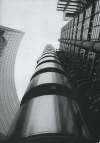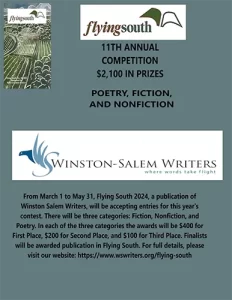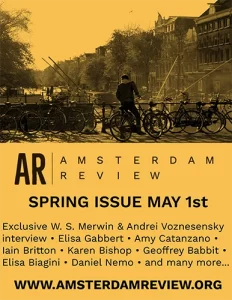Neon Magazine – 2013
Neon hails from the UK where Editor Krishan Coupland accepts works from around the globe. Neon favors literary and slipstream short-form writing: “We err towards the dark, and like to experiment with language and form” with “a particular taste for the apocalyptic.” Dark and apocalyptic has never been my style, so it makes me wonder how I found such comfort in much of what I read here.
Neon hails from the UK where Editor Krishan Coupland accepts works from around the globe. Neon favors literary and slipstream short-form writing: “We err towards the dark, and like to experiment with language and form” with “a particular taste for the apocalyptic.” Dark and apocalyptic has never been my style, so it makes me wonder how I found such comfort in much of what I read here.
Jenny Gray’s poetry opens the volume, portraying the darkness of human behavior in her characters. In “37 Milvington Road” there is ‘maybe’ an affair going on, as the players converse:
You
lean on the door, “Will you
tell him?”
“Nothing happened,” I say.
And in “Hampshire Saddleback,” a farming couple’s argument comes to an unfortunate end for an innocent victim:
He paused a moment, he put his wife’s
face on the sow and the sow’s
face on his wife.
When he was done beating
he scooped the sausage meat into a refuse bag
and went to bed.
Dark, but not just for the sake of being dark. In the context of the whole poem, dark because it is the way humans are. Dark as a perception of the world around us.
Other poems tending more toward the slipstream include Noel Sloboda’s “The Cannibal Affair” (we dragged // bony bodies to a secret banquet / in my Toyota’s tight backseat”), “My Stepfather as a Porcupine” (“spikes that lanced my kidneys, / scratched my lungs, / and pricked my brainstem”), and “My Mother as a Raccoon” (“Dropped us in trashcans / filled to bursting with blessings”).
Sarah Greenfield Clark’s six poems show a proclivity toward darkness like that in fairy tales. With “But What Can We Do About It?” there is a kind of texted-dialogue that reads like the big bad wolf is loose:
It’ll run its course
What if it doesn’t
He’ll grow bored of her
Bored? He’s never had so much sex.
“This Gun Takes Vowels and Consonants” has the Prince Charming: “Reload, ‘He’s nice enough’ (for someone else)” and the fatal demise of the princess, “The victim / smiles with false precision; / an artist’s impression.” Two others continue that underlying thread, “(Smug Sister) I Don’t Mean to Brag But . . .” and “Hunting in the Snow” with its ominous one-liner: “Your hunting season’s over.”
For more narrative-style poetry, Derek Adams offers three works, “What You Need to Know About Your Caesarean Section,” which is the kind of writing that creeps me out, “Paranomal Investigation” (enough said), and “The Eels,” which is dark of the kind that Nature makes and that creeps us all out. And not to leave out Deborah Sellers and Annette Volfing, whose shorter poems deliver high impact imagery and nerve chilling emotion, most especially Sellers’s “I Need a Sharper Knife for This” and Volfing’s “The Row”—appropriately placed at the close of the issue.
There are only two fiction pieces, but they provide significant substance with strength of style. Interestingly, both end with characters in the future looking back over the events of the stories. It’s an intelligent technique that can easily go cheesy, but both authors handle it skillfully. “Nothing, Shadows” by Jack Brodie begins, “I was lying alone in a double bed, doing terrible things to a pair of knickers.” How can you not want to keep reading? A dialogue-centered piece, Tom and Dylan discuss whether or not Dylan’s girlfriend is cheating on him. Its comfort is in the typical, late-night, drunken exchange between friends, and in the assurances the third wheel is always obligated to provide to get the couple to resolve it so everyone can get some sleep. The conclusion resonates deeply: a childhood friend recalling the reality of a simple time in youth which becomes the slipstream through memory.
If I was saving best for last, it would be Nicole Cloutier’s “Coyote Runs,” which begins with a version of the universal fire-theft myth: Coyote stealing fire. Parts of this are woven throughout, a few italicized lines placed to parallel with the main story. The end of the intro and the start of the main story show how deftly Cloutier has entwined these:
Between Coyote’s gritted teeth is a stick that burns from one end. The red flames devour the scorched bark and singe the hairs on the coyote’s cheek. The sun rises orange. Each breath burns.
A girl, fifteen, throws her leg through the open window and straddles the sill, balancing one foot on the loose toilet back, the other on the coiled hose that hangs carelessly against the house’s panel siding.
The story is three teens on a secret night outing, a sequence of events detailed with the kind of surrealism that late-night escapades can make person believe they see and feel (perhaps influenced by marijuana). What’s actually refreshing about this piece is the gentle, innocent actions of the characters—compared to what I see so much of in other writing where a girl sneaking out at night and smoking weed will inevitably end up in rape, maiming, or murder. Maybe that’s the Americanized version. In “Coyote Runs,” an abandoned house is the destination for nothing more than to hang out. One of the teens actually cleans the floor. The mishap that occurs on their way home is handled ingeniously, even humorously, and most of all, believably, in the way we probably all got away with something when we were teens that we’re shocked to look back on and believe we actually got away with. The Coyote in all of us, stealing fire.
Neon includes black and white artwork and is available for free online or by subscription in print. Editor Krishan Coupland is a grad student who could certainly use the support of subscriptions, but more than that, his ability to select solid works with nearly a decade of publishing shows a sensibility worthy of recognition through readership.
[www.neonmagazine.co.uk]





